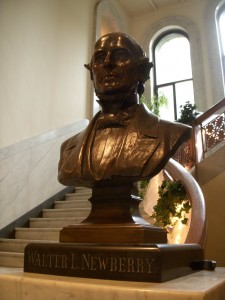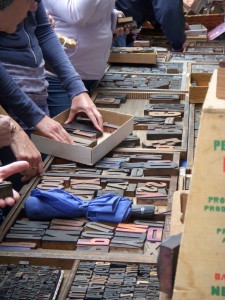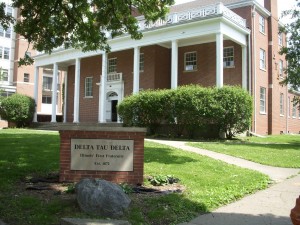Tue 9 Jun 2009
Chicago Saturday: Newberry & Lit Fest
Posted by James Capobianco under ramblingsComments Off on Chicago Saturday: Newberry & Lit Fest
 I’m a little late in posting about this, but I have to mention that despite being thwarted in my efforts to take the train (“Sold out?” I said to the Amtrak operator, incredulously. “I didn’t even know trains could sell out!” This from someone who spent a Sunday of Thanksgiving weekend on an Amtrak train to Boston during college sitting on his luggage between the cars of the train. The whole 3 hour ride. In November. They sure as heck didn’t sell tickets based on seats back then), I made it to Chicago another way (shout-out to Illini Express Shuttle!)and in time for the 10:30am tour of the Newberry. I hadn’t expected it to be sobig, especially the massive general reading room and reference area. The Special Collections reading room (or “fish bowl”) was almost empty, but was interesting for its transparency and orderlyness. I chickened out and, perhaps influenced by HCL’s draconian in-building photo policies, feared retribution should I try to document it in any way.
I’m a little late in posting about this, but I have to mention that despite being thwarted in my efforts to take the train (“Sold out?” I said to the Amtrak operator, incredulously. “I didn’t even know trains could sell out!” This from someone who spent a Sunday of Thanksgiving weekend on an Amtrak train to Boston during college sitting on his luggage between the cars of the train. The whole 3 hour ride. In November. They sure as heck didn’t sell tickets based on seats back then), I made it to Chicago another way (shout-out to Illini Express Shuttle!)and in time for the 10:30am tour of the Newberry. I hadn’t expected it to be sobig, especially the massive general reading room and reference area. The Special Collections reading room (or “fish bowl”) was almost empty, but was interesting for its transparency and orderlyness. I chickened out and, perhaps influenced by HCL’s draconian in-building photo policies, feared retribution should I try to document it in any way.
To make the most of my short time in Chicago, I speed-walked from the Newberry to the Printers’ Row Lit Fest down Dearborn Street. I should say I am not a regular book fair attender, and am thus not sure if I should have been impressed at this one.  I was, though, at the number and variety of booths and the amount of people attending, despite the impending showers. I did manage to just finish my walk-through of all the booths before the showers began, and the plastic sheeting was whipped out to cover shelves in danger.
I was, though, at the number and variety of booths and the amount of people attending, despite the impending showers. I did manage to just finish my walk-through of all the booths before the showers began, and the plastic sheeting was whipped out to cover shelves in danger.
It was then on to the Chicago Public Library for a brief stop, and then to Grant Park. I wondered as I arrived there if it would now become a tourist stop by virtue of being the site of Obama’s emotional victory speech on election night. I admit that this was the main thing that brought me there, despite the increasing intensity of rain.
My ride back was courtesy of Amtrak, a less popular run, though one that was still full.
You can see more pictures of my Chicago adventure on my Picasaweb Album.

